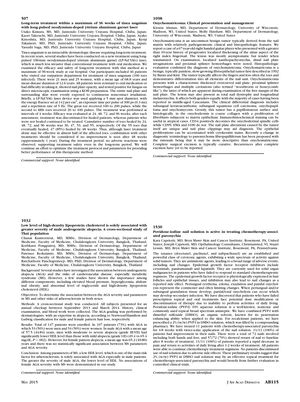Onychomatricoma: Clinical Presentation and Management
May 2015
in “
Journal of The American Academy of Dermatology
”

TLDR The treatments for fungal nail infection, hair loss in men, benign nail tumor, and chemotherapy-associated nail bed inflammation are effective and safe.
The document reports on four separate studies:
1. A study on the treatment of tinea unguium (fungal nail infection) using long-pulsed 1064nm neodymium-doped yttrium aluminum garnet (LP-Nd:YAG) laser over a maximum of 96 weeks. The study included 46 patients (21 men and 25 women, mean age 68.8 years) with 100 infected toes. By 96 weeks, 55 toes had healed, with 47 of those healing by 48 weeks. No adverse reactions were observed, suggesting the safety of the treatment.
2. A cross-sectional study of 147 Thai patients (107 with androgenetic alopecia (AGA), 53 men and 54 women) found that in men with moderate to severe AGA, lower levels of high-density lipoprotein (HDL) cholesterol were associated with greater severity of hair loss. No such association was found in women.
3. A case report of onychomatricoma, a benign tumor of the nail matrix, in a 67-year-old guitar player. The tumor was successfully treated with complete surgical excision, and no recurrences were reported.
4. A treatment study for chemotherapy-associated paronychia (nail bed inflammation) using a 2% povidone-iodine solution in dimethyl sulfoxide (DMSO). All 11 patients treated showed improvement, with 57 out of 72 nails returning to baseline after 8 weeks, and all patients were able to continue their chemotherapy regimens without interruption.
Each study provided evidence for the efficacy and safety of the respective treatments for the conditions investigated.


